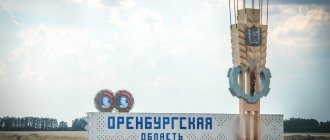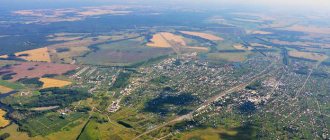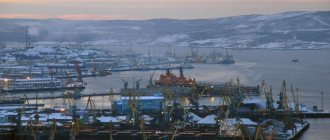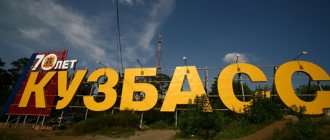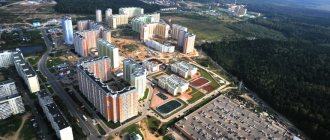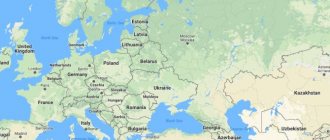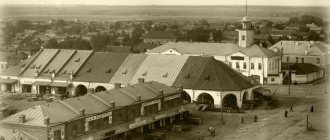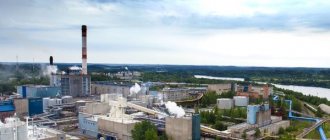The city of Novosibirsk, the capital of the Novosibirsk region, raised many questions among members of our community. People argued until their fingers were callused about the materials presented in the articles: nonsense, the author had never been to the city, a custom article. I would like to assure you in advance that no one orders articles from us. Everything is written on the initiative of the project’s author group, and according to the vector of community development. And the fact that the editors’ opinions sometimes do not coincide with the readers’ opinions is not surprising, because we are all different people, and, as we know, there is no ultimate truth.
General information and history of the Novosibirsk region
And we will go with you for a walk along the tram rails. We will sit on the pipes at the beginning of the ring road. Our warm wind will be the black smoke from the chimney of the plant. The guiding star will be the yellow plate of the traffic light. The poet, singer and musician Yanka Diaghileva, widely known in narrow circles, about Novosibirsk
The Novosibirsk region, led by the glorious city of Novosibirsk, is one of the leading regions of the Russian Federation in many respects. A little over a century ago, on the site of the Siberian metropolis there was the village of Novonikolaevka, and now there is a metro, kilometers of concrete jungle and hours of traffic jams. Perhaps Novosibirsk is one of the most rapidly developing cities in Russia, which confidently survived the collapse of the Soviet Union and is trying with all its might to keep up with Moscow, St. Petersburg and Krasnodar.
Panorama of Novosibirsk. Photo by Vladimir (https://fotki.yandex.ru/users/vladimirjdanov)
In general, Russians began to populate the territory of the modern Novosibirsk region quite late. The indigenous population of these places are the Siberian Tatars, of whom there are quite a few left now. The first Russian villages began to appear only at the beginning of the 18th century, and they were very small. At the same time, industrialist Demidov began to build his copper smelters in these places, but this was not enough for the full development of the region.
The impetus for the development of the village of Novonikolaevka was given by the railway. The Trans-Siberian Railway had to cross the Ob River at some point, and this particular village was chosen. So Novonikolaevka with ten thousand inhabitants became a major transport hub. Subsequently, additional railway lines were built from here, to the south - to the Altai Territory, and to the north - to Tomsk.
Even Novosibirsk, no matter how blasphemous it may sound, was rendered a great service by the Great Patriotic War. During the fighting, factories, research institutes, and educational institutions were evacuated here. In 4 years, the population of Novosibirsk has doubled due to newcomers. Moreover, these newcomers were no match for today’s migrants from Central Asia - people of science, culture, intelligentsia, engineers. Thus, we can come to the conclusion that there are almost no real Siberians in Novosibirsk, only immigrants from central Russia during the times of collectivization and the Great Patriotic War.
All these people made Novosibirsk the way we are used to seeing it. In 2007, the city was ranked second in the ranking of the most favorable cities to work. Since then, Novosibirsk periodically wins something, either the title of “The Most Comfortable City in Russia” or some other title.
Smart Novosibirsk people built the metro, the world's longest metro bridge across the longest river in the world, Akademgorodok.
Akademgorodok is the main and, perhaps, the only real attraction of Novosibirsk. City within a city. The number of clever people per square kilometer here is simply off the charts, and squirrels, accustomed to people, run around the streets. Academy Town is definitely worth seeing. Here you want to walk, think, talk and argue. In our age of social networks, jabbers and other useless inventions, it seems as if Academy Town has stepped out of the pages of the novels of the Strugatsky brothers (surely, young readers have now climbed into Yandex, and mature ones have grinned contentedly). Of course, in the middle of Siberia suddenly there is a city of scientists. There is even a joke: “Novosibirsk Academgorodok is the cutting edge of Soviet science!... There’s simply nowhere else to go…”.
Technopark building in Akademgorodok. Photo by dveros (https://fotki.yandex.ru/users/dveros/)
Since physicists are creative people, Academy Town has acquired thousands of legends during its existence. Decide for yourself whether this is true or not. For example, there is an opinion that there is a ballistic missile near the Upper Zone shopping center, under the fountain. Or, the main street of the Upper Zone of Akademgorodok, Morskoy Prospekt, is built in such a way that in the event of a nuclear strike, it can extinguish its force and release radiation into the Ob Sea.
There are many more fantastic tales, but it is better to hear them in the town itself from its residents. If you are in Novosibirsk, be sure to come to Akadem.
Concluding the story about the distinctive features of the Novosibirsk region, one cannot fail to mention the Ob Sea. In truth, only those who have not seen a real sea can call it a sea. The Ob reservoir has become a side effect of the activities of the Novosibirsk hydroelectric power station and, concurrently, the main breeding ground for opisthorchiasis in the region.
The shore of the Ob reservoir. Photo by W-Elenga (https://fotki.yandex.ru/users/w-elenga)
Geographical position
The Novosibirsk region stretches from west to east for 642 km, and from north to south - 444 km. The region is located in the southeast of the West Siberian Plain. In the southwest, the Novosibirsk region borders with Kazakhstan, in the north - with the Tomsk region, in the east - with the Kemerovo region, in the south - with the Altai Territory, in the west - with the Omsk region.
The main water artery of the region is the Ob River. In addition, there are more than 3 thousand lakes in the region. In the north of the region, the world's largest Vasyugan swamps begin.
Population
Unfortunately, not only academicians live in Novosibirsk, there are also outright rednecks. No one measured the percentage ratio of one to the other. In total, 2,731,176 people live in the region. Of these, 77.26% are city residents. 93% of Novosibirsk residents are Russian. Other nations are poorly represented, no more than 2% of the total population.
Crime
Do not forget that Novosibirsk is the third most populous city in the country, and where there are people, there are scammers. In general, the crime situation in Novosibirsk is normal. Of course, there are organized criminal groups, but they are engaged in serious matters, and an inexperienced eye will not distinguish them from serious businessmen. And so, in the city you can run into a traffic stop, the wheels can come loose at night, nothing extraordinary.
Unemployment rate
There is work in Novosibirsk, and the pay for it is good. It is not for nothing that young people from Kemerovo, Leninsk-Kuznetsky, and Barnaul come to the capital of Siberia. There's plenty to do here, and you'll pay for it. Moreover, both humanists, techies, and people without education will be able to find work. The average salary in the Novosibirsk region is 25,000 rubles (in the comments, please do not be indignant, we did not come up with this figure).
Property value
The problem of all megacities, expensive housing, has not spared Novosibirsk. The price per square meter here approaches 60,000 rubles. Of course, square meters in one-room apartments are more expensive, while in three- and four-room apartments they are a little cheaper. For a one-room apartment in a good area you will have to pay about half a million rubles.
Climate
The climate in the Novosibirsk region is continental. Winters here are cold and summers are hot. The average temperature in January is −20 °C, and in July - +20 °C. The climate of Novosibirsk is milder than most Siberian regions. If it were not for the pollution of the city atmosphere, one would be able to live and be happy.
Economic boom
The decision to build a railway line to Altai and the construction that began created a real economic boom. This was the construction of the century for that time. The future flagship of the Siberian Federal District, Novosibirsk, as it appears to us in the present, was born precisely at this time. The plans of the tsarist government were to make it the capital of the Altai province in 1917. But the Kerensky government took a different path, giving preference to Barnaul.
7 banks were opened in the city. The population at that time was 70 thousand people. Housing was built, new industrial enterprises were created. Agriculture developed. The city's infrastructure was changing. A hospital and schools were opened. By the way, in 1912 the city was the first in the country, along with Yaroslavl, to declare universal primary (grade 4) education, which for a country where only every fourth resident could read and write was a huge step forward. It is not for nothing that the main city of the Siberian Federal District, Novosibirsk, as it has become today, has become a world scientific center.
Cities of the Novosibirsk region
Novosibirsk is the capital of Siberia, and the most shocking (after Yekaterinburg, probably) city beyond the Urals. A real metropolis, second in population only to St. Petersburg and the Mother See. Here you can stand in traffic jams for three hours, cheat in countless cafes and ride the metro. It's Moscow in miniature, the only thing missing is the mausoleum. An excellent option for moving from backward Siberian villages and small, dying towns.
Berdsk - Berdsk is three times older than Novosibirsk. When the capital of Siberia was still Novonikolayevka, carriages of merchants already traveled along it. To some extent, Berdsk is a resort town. It is located on the shore of the Ob Sea in a green zone. Many Novosibirsk residents like to relax here, and on Friday evenings there are quite a lot of traffic jams on the Novosibirsk-Berdsk highway. In total, there are just over one hundred thousand Berdsk residents in the world. It is possible that over time, when Novosibirsk absorbs Berdsk, the residents of Berdsk will remain only in the annals of history.
From Siberia to Altai
In May 1893, builders of a settlement of bridge workers arrived on the right bank, which would be built north of the village of Krivoshchekovskie settlements. After a while they will merge together and receive the single name Novo-Nikolaevsk. In ten years, the village at the Ob railway station will be awarded the title of a city without a district.
In St. Petersburg, a decision is made to connect Siberia with Altai by rail. Thanks to the efforts of the city mayor of Novo-Nikolaevsk V. Zhernakov, a decision was made to build a railway branch to the city of Semipalatinsk through Novo-Nikolaevsk in 1912. This played a major role in the development of the future of Novosibirsk, the center of the Siberian Federal District. The history of the city has changed dramatically; it is becoming a transnational transport hub.
(adsbygoogle = window.adsbygoogle || []).push({});
Siberian Khanate, Russian colonization (XVI-XVIII centuries)
The struggle for supreme power in the Siberian Khanate intensified in the middle of the 16th century, when one of the descendants of Genghis Khan, the son of the Uzbek ruler Kuchum, who seized all power in Siberia, laid claim to the khan’s throne.
After the conquest of the Kazan (1552) and Astrakhan (1556) khanates, the paths to the east opened for the Russian people. On September 1, 1582, a detachment of the legendary Ermak set off for Siberia. The decisive battle with Kuchum took place on October 26, 1582 on the banks of the Irtysh. In it, Ermak won and then took Isker (Kashlyk) without a fight. After the death of Ermak in 1584, the surviving 150 Cossacks left Siberia and went “to Rus'.” But at this time, a detachment sent by the new Tsar Fedor, led by governor I.Ya. Mansurov crossed the Urals and gained a foothold in Siberia. On August 20, 1598, Andrei Voeikov’s detachment defeated Kuchum’s army at the mouth of the Irmen River in the territory of what is now the Novosibirsk region. Having suffered defeat, Kuchum could no longer recover from it. The Chat and Baraba Tatars accepted Russian citizenship. A new period has begun in the history of Siberia.
At the end of the 16th century, mass migration to Siberia from the European part of the country began. The government launched energetic activities: peasants from the northern districts, exiles, and city residents (townspeople) who were “cleaned up” (that is, recruited) by the tsarist governors were sent to Siberia. However, free settlers played a decisive role in the formation of a permanent peasant population. They were attracted by rumors about free fertile lands and free life.
Under the protection of defensive lines, Russian peasants began to settle in the southern regions of Western Siberia. The settlement of the region began from the Tomsk district. In 1703, near the mouth of the Umreva River, the Umrevinsky fort grew, and Russian villages appeared in the basins of the Oyash, Chaus, and Inya rivers. In 1710, the village of Krivoshchekovskaya was founded - a Russian settlement on the territory of the future Novosibirsk. In 1713, the Chaussky fort was erected on the banks of the Ob. Another 3 years later, the Berdsky fort grew at the mouth of Berdi. In 1722, in the Barabinsk steppe along the road connecting Tara with Tomsk (and which later became part of the Moscow-Siberian tract), Ust-Tartassky, Kainsky and Ubinsky fortified points were founded.
Ancient centuries
In the 7th-6th centuries BC. e. forest tribes of the Mongoloid type penetrated into the territory of the Novosibirsk Ob region, and in the 3rd-2nd centuries BC. e. - northern forest tribes By this time, fortified settlements appeared - fortified settlements surrounded by earthen ramparts and ditches. At the beginning of the 13th century, the hordes of Genghis Khan fell on Siberia, after whose death a struggle for power began between his sons and grandsons. At this time, the Siberian Tatar nationality emerged in Western Siberia. It was formed as a result of the merger of local tribes: the Altai Kipchaks, who gave the Siberian Tatars their Turkic language, and the conquerors - the Tatar-Mongols. The Baraba Tatars lived in the western part of the Novosibirsk region, and the Chat Tatars lived in the northeastern part, along the banks of the Ob. One of the energetic tribal leaders, Mara-Mamet, in 1495 united the Tatar lands along the Tobol and in the middle reaches of the Irtysh into one khanate and declared himself its khan. Then he conquered and annexed the lands of the Tyumen Khanate and the Baraba Tatars to his possessions. The city of Isker (Kashlyk) became the capital, and the new khanate was named Siberian.
Civil War
It was Novosibirsk, in 1917 Novo-Nikolaevsk, that was destined to become the city where the Civil War began, since historians consider it to be the beginning of the uprising of the Czechoslovak Legion. A Czech unit located in the city, together with the officer underground, overthrows Soviet power in the city. At the same time, the Siberian Autonomous Region was formed in Tomsk and a provisional Siberian government was formed. But already in November 1919, units of the Fifth Red Army liberated the Siberian regions, in which Soviet power was established.
